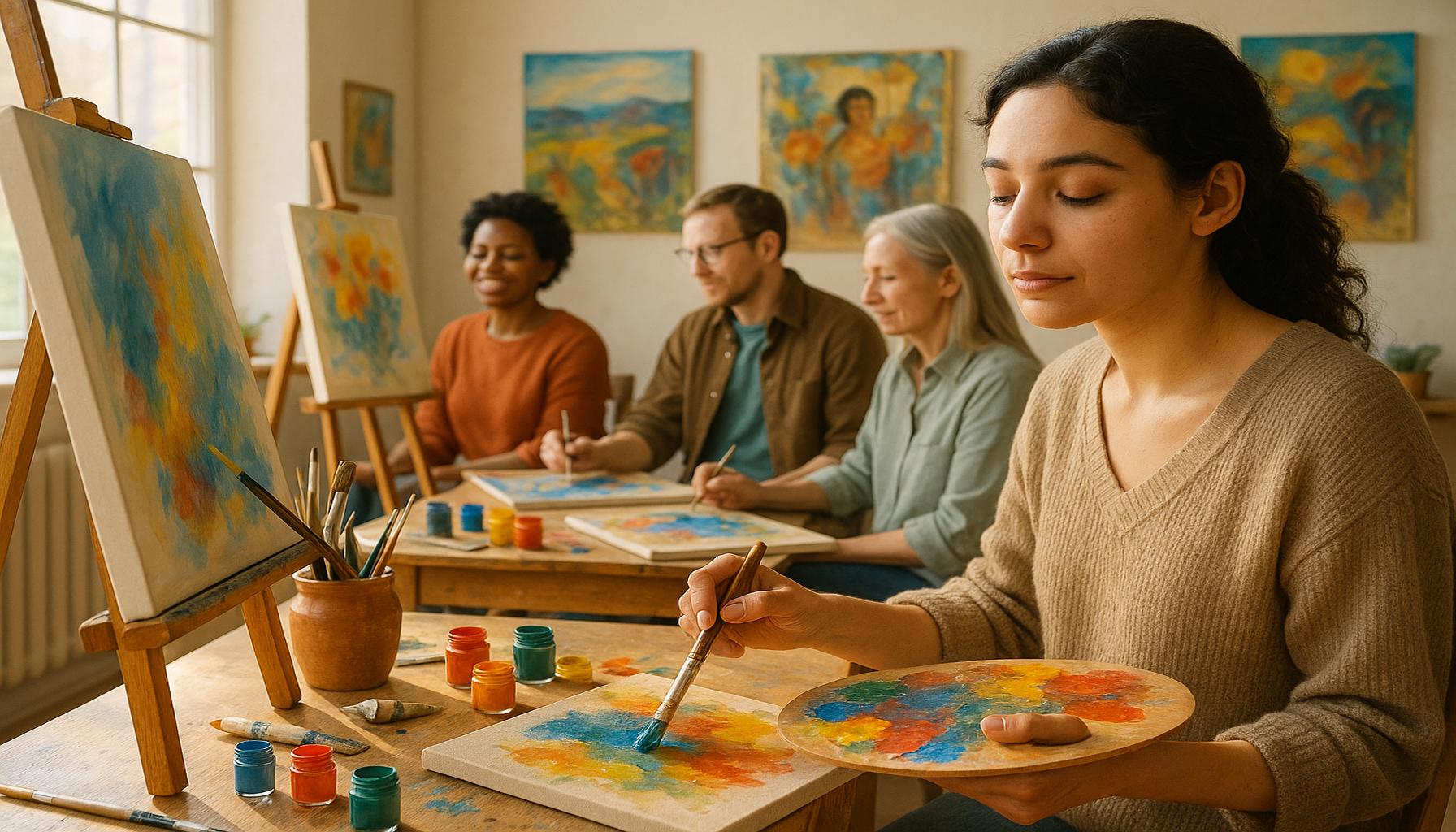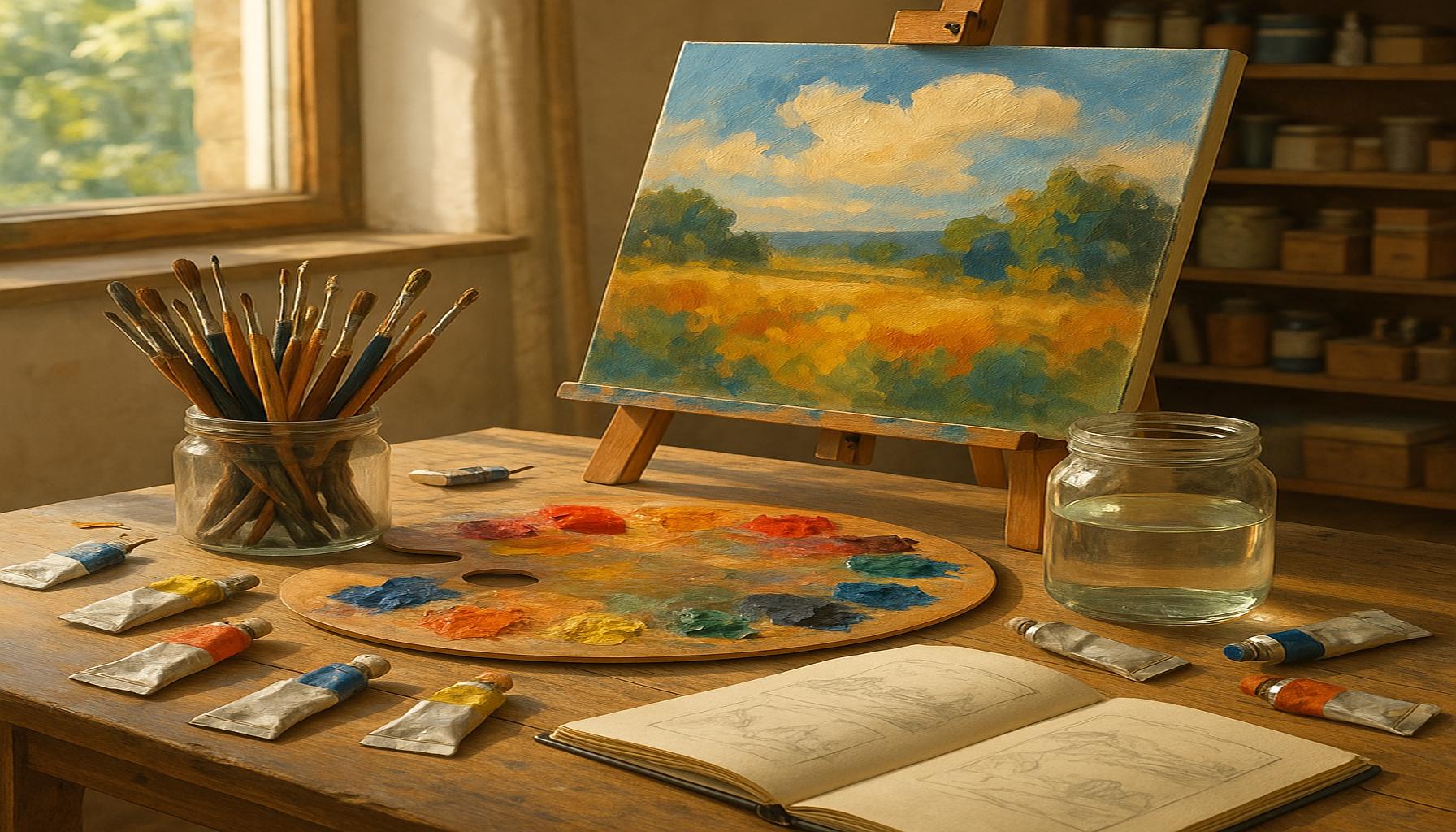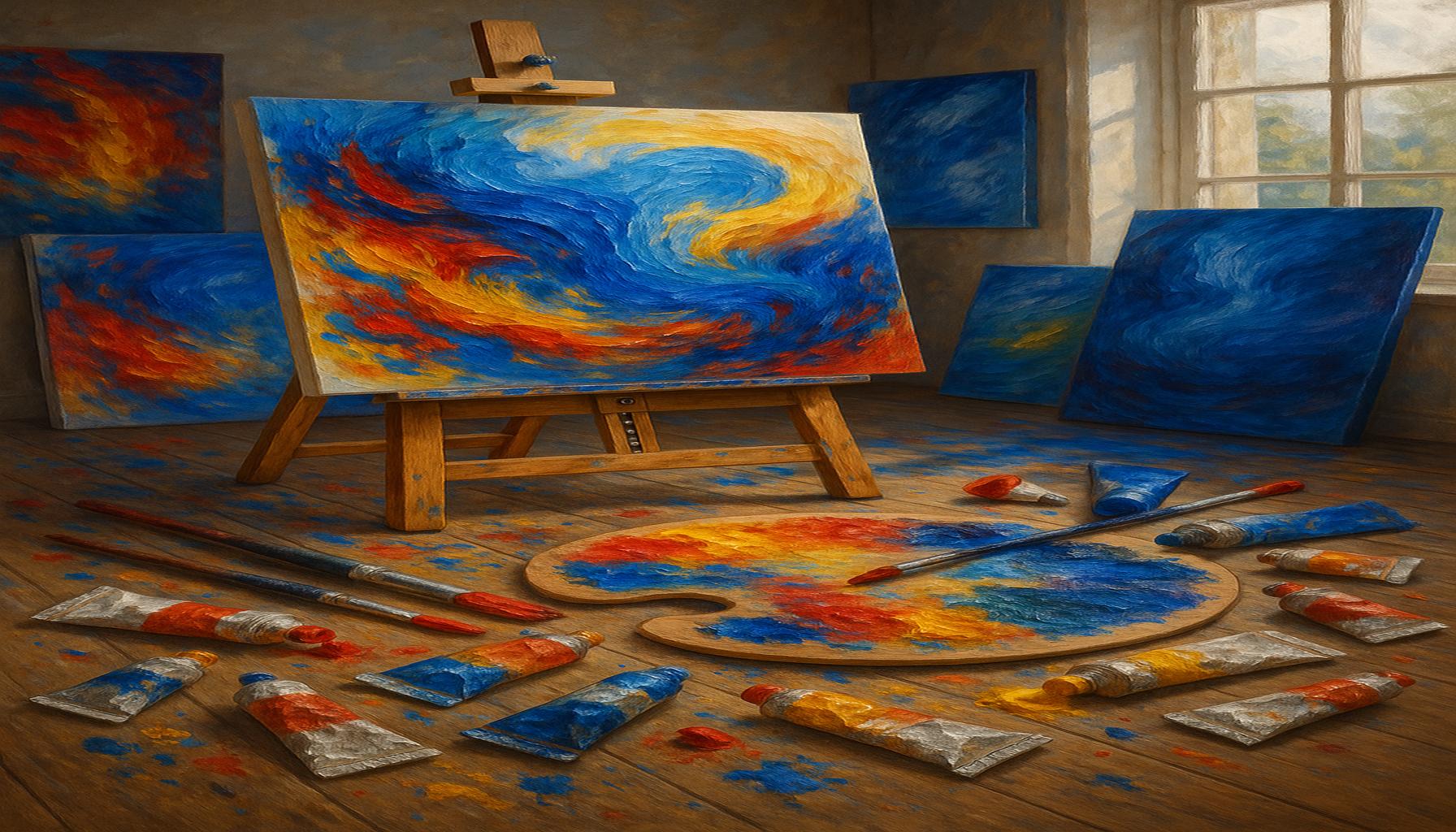The Role of Painting in Cultural Identity: Exploring Heritage Through Brushstrokes

The Expressive Power of Painting
Throughout history, painting has served as a powerful tool for expressing and preserving cultural identity. In every stroke and hue, artists encapsulate narratives that echo the heritage of their communities. This intersection of art and culture invites us to explore the profound ways in which painting reflects societal values, beliefs, and traditions.
The role of painting in cultural identity can be examined through various lenses, such as:
- Historical Context: Art movements often arise in response to pivotal historical moments. For instance, the Harlem Renaissance of the 1920s ignited a flourishing of African American art and literature, giving birth to iconic figures like Aaron Douglas and Jacob Lawrence. Their works illustrated the richness of Black culture and the struggles that shaped their communities, effectively using the canvas as a medium for social commentary.
- Regional Styles: Distinct styles and techniques reflect local customs and materials. In the Southwest, for example, vibrant textile patterns and color palettes are commonly combined with traditional Pueblo pottery designs in the work of Native American artists. These artworks are not simply decorative but deeply embedded in cultural storytelling and spiritual significance.
- Symbolism: Colors and imagery often carry deep cultural meanings. The use of red in many Native American paintings symbolizes life and the earth, while in African American art, it can represent passion and resilience. These symbols transcend mere aesthetics, portraying the lived experiences of various communities.
In the United States, notable examples can be found in the works of artists from diverse backgrounds. Artists like Georgia O’Keeffe have captured the essence of American landscapes while infusing them with personal meaning, reflecting both her identity as a woman and her connection to the vast expanses of the Southwest. Similarly, contemporary artists such as Kehinde Wiley challenge traditional perceptions of race and identity through their portraits that place people of color in historical contexts.
These expressions not only showcase individual talent but also celebrate a rich tapestry of cultural heritage. As we delve deeper into the subject, it becomes evident that painting is not just a method of self-expression; it acts as a bridge to the past. Each brushstroke invites us to unravel the complexities of cultural narratives and appreciate the artistry behind them.
Join us on this journey to uncover how painting continues to shape and reflect our diverse identities. By engaging with the visual arts, we not only appreciate the beauty but also gain insight into the histories and experiences that forged these unique artistic expressions. Each piece serves as a dialogue across generations, enabling future artists and audiences to connect with their heritage and collective stories.
DIVE DEEPER: Click here to discover sustainable knitting techniques
Tracing Narratives Through Art
Painting as a form of expression serves more than just an artistic purpose; it functions as a vital record of cultural identity, documenting stories, struggles, and triumphs that define communities. From ancient murals in indigenous cultures to contemporary urban art movements, painting captures the essence of human experience, melding personal perspective with collective memory. Within the United States, this phenomenon is beautifully illustrated through the work of various artists who embrace their cultural backgrounds, nurturing a legacy that speaks to the broader narrative of humanity.
One key element to consider is the historical context that gives rise to specific art movements. For example, the Mexican muralist movement of the early 20th century sought to reclaim indigenous identity in response to the sociopolitical milieu following the Mexican Revolution. Artists such as Diego Rivera and Frida Kahlo used their canvases to address social injustices and celebrate indigenous heritage, influencing generations of artists. Their murals function as public art, reflecting a collective narrative that resonates with viewers from all walks of life. This demonstrates how painting can not only encapsulate a moment in time but also spur discussions around cultural identity and history.
Additionally, painting is often enriched by distinct regional styles that reflect local customs and available materials. For instance, the art of the Pacific Northwest Coast indigenous tribes is characterized by their intricate totem pole designs and rich totemic imagery, incorporating symbols that convey important cultural narratives. Each piece tells a story steeped in tradition, reinforcing the connection between art and ancestry. Similarly, the folk art traditions of the Appalachian region, marked by their vibrant colors and whimsical themes, echo the complexities and joys of rural life, thereby acknowledging the histories of the communities they originate from.
Another integral aspect of painting is the use of symbolism, where colors, forms, or motifs carry significant cultural meaning. In African American art, for instance, the color blue often encapsulates themes of sorrow or spirituality, while the color yellow may evoke feelings of hope and enlightenment. Artists like Romare Bearden used collages that blended imagery from African American life, crafting narratives that conveyed both hardship and resilience. These symbolic representations act as visual metaphors for cultural identity, allowing viewers to engage with the artwork on a deeper emotional level.
- Connection to Heritage: Artists create works that resonate with their ancestry, ensuring traditions are not forgotten.
- Social Commentary: Many paintings serve as powerful statements regarding societal issues, igniting conversations around race, identity, and belonging.
- Emotional Reflection: Art can mirror the internal struggles and triumphs of individuals within a culture, revealing shared experiences.
As we continue to explore the multifaceted role that painting plays in cultural identity, it is crucial to recognize that these expressions are steeped in history, interwoven with the stories of those who came before. Each brushstroke not only documents the past but also contributes to a vibrant ongoing dialogue regarding identity, heritage, and community. Understanding these elements ultimately enriches our experience of art, inviting us to engage with the cultural legacies that shape our world today.
Painting serves as an essential medium that transcends mere aesthetic appreciation, functioning instead as a powerful vehicle for cultural expression and identity. Throughout history, diverse societies have utilized the brush as a means to convey the intricacies of their heritage, transforming canvases into rich narratives that reflect their values, traditions, and historical contexts. One notable example is Indigenous Australian art, where vibrant colors and unique styles illustrate deep connections to the land and ancestral heritage. The motifs in these paintings often represent stories passed down through generations, emphasizing community and belonging. Similarly, in African cultures, paintings highlight social narratives and spiritual beliefs, often making use of symbolic imagery that fosters national unity and pride.Moreover, the role of painting in cultural identity is not limited to traditional forms; contemporary artists are also reinterpreting their heritage through modern techniques, combining past influences with current societal issues. This evolution showcases the continuous dialogue between history and modernity, illustrating how cultural identities are not static but are dynamic and adaptable.Indeed, painting acts as an archival resource, preserving the essence of cultural identities in an ever-globalizing world. As art historians delve into the significance of these brushstrokes, they reveal layers of meaning and perspectives that invite audiences to engage with, and reflect on, their own cultural heritage.Furthermore, community art projects often highlight the importance of collaboration and shared experiences, reinforcing bonds among individuals through the collective act of creation. These endeavors illuminate how artistic expression can serve both personal and communal needs, fostering a sense of identity not only through individual talent but also through collective memory and practice.For those eager to explore the complexities of how painting enriches cultural identity, numerous exhibitions and local art galleries offer insights into the transformative power of art. Engaging with these expressions offers a deeper understanding of diverse heritages and the pivotal role they play in shaping individual and collective identities in today’s multifaceted society.
DISCOVER MORE: Click here to learn about the evolution of digital photography
Embracing Diversity Through Artistic Expression
Painting’s role in cultural identity extends beyond mere representation; it serves as a bridge connecting diverse communities. In the United States, multiculturalism manifests vividly in the arts, particularly through the contributions of immigrant artists who draw on their unique heritages to create vibrant dialogues within their work. Artists like Kehinde Wiley, known for his portraits of African American individuals set against elaborate backgrounds inspired by classical European art, challenge preconceived notions of identity and elevate cultural narratives that have often been overlooked in mainstream art.
Furthermore, contemporary movements such as street art have become significant in expressing cultural identity, particularly within urban environments. Street artists often infuse their works with social commentary that reflects the complexities of urban life and cultural struggles. For example, the works of artists such as Shepard Fairey and Banksy not only entertain but challenge audiences to confront societal issues, such as inequality and injustice. Their public exhibitions democratize art, making it accessible to a wider audience and enabling dialogues that transcend cultural barriers.
Another dimension of painting’s influence on cultural identity can be found in the practice of community art projects. Initiatives that gather artists and community members to collaborate on mural projects foster a sense of ownership and pride among locals. One notable example is the Philadelphia Mural Arts Program, which has transformed underutilized spaces into canvases showcasing the stories, aspirations, and values of diverse neighborhoods. These murals serve as a visual identity for the community, encapsulating shared histories and creating a narrative that unites residents in celebration of their unique backgrounds.
The realm of painting also intersects with cultural preservation. Many contemporary artists are taking the initiative to engage with traditional techniques and themes that are at risk of fading into obscurity. In Native American art, for instance, painters are not only reviving old styles but also adopting modern techniques to address contemporary issues while honoring their ancestry. The works of artists like Rick Bartow and Jaune Quick-to-See Smith blend traditional motifs with modern storytelling, reinforcing the relevance of cultural heritage in today’s world.
- Intercultural Collaboration: Collaborative art projects foster a sense of community, allowing diverse voices to merge, creating powerful visual narratives that reflect collective identities.
- Global Influence: The interconnection of cultures is evident in how international styles influence American artists, enriching their creations and broadening the discourse around cultural identity.
- Resistance and Resilience: Many artists use their paintings to respond to societal challenges, making art a form of resistance and a means to express resilience against adversity.
Through the exploration of these varied elements, it becomes apparent that painting is a dynamic medium that continually reshapes and redefines cultural identity. As artists navigate their heritage while engaging with contemporary societal issues, their work not only honors the past but also forges pathways toward understanding and unity in our increasingly diverse world. Each piece stands as a testament to the rich tapestry of narratives that characterize the human experience, inviting viewers to explore the myriad expressions of cultural identity present in every brushstroke.
DIVE DEEPER: Click here to discover the beauty in everyday moments
Conclusion: The Impact of Painting on Cultural Identity
In summary, painting emerges as a powerful vehicle for exploring and expressing cultural identity, acting as a mirror that reflects not only the individual artist’s heritage but also the collective narratives of communities. The dynamic interplay between tradition and contemporary themes highlights the transformative nature of art, as seen in the works of diverse artists across the United States. From Kehinde Wiley’s striking portraits that challenge historical norms to the evocative street art resonating in urban spaces, each brushstroke embodies a story waiting to be unveiled.
The significance of community engagement through collaborative art projects emphasizes the importance of shared cultural experiences, fostering a strong sense of belonging and pride. These initiatives not only revive local narratives but also encourage intercultural dialogues, bridging gaps among diverse populations. Furthermore, the revival of traditional painting techniques by contemporary artists serves as a poignant reminder of the resilience of cultural heritage, affirming its vital role in today’s society.
As we reflect on the multifaceted influence of painting in shaping cultural identity, it becomes evident that this artistic medium is imbued with layers of meaning and purpose. Each artwork invites viewers to explore their own connections to heritage, while simultaneously sparking curiosity about others’ stories. By embracing the richness of diverse artistic expressions, we open ourselves to a greater understanding of our shared human experience, inspiring future generations to carry forward the legacy of cultural storytelling through art.



